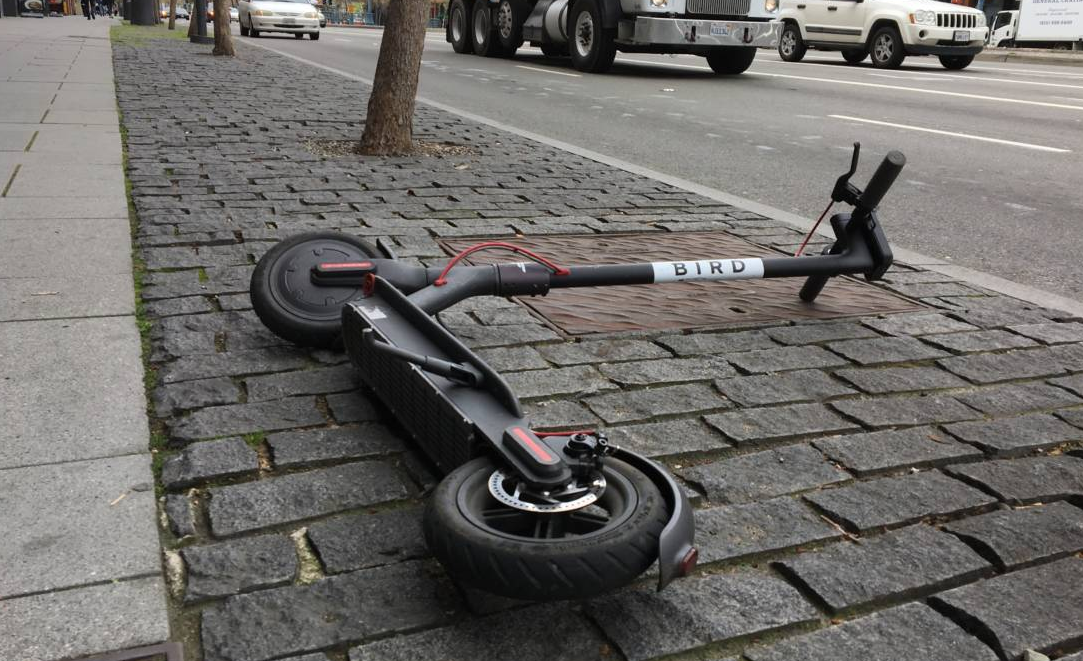Electric scooters shouldn’t be treated as toys: Face and head injuries from their use TRIPLED in the last decade
08/11/2020 / By Divina Ramirez

Electric scooters are all the rage in major cities across America. Light, fast and simple enough to operate, scooters offer a fun and emissions-free means of getting around urban neighborhoods and bustling metropolises for children and adults alike.
But people hopping onto electric scooters in cities are among the most susceptible to injuries, according to recent research from the Rutgers New Jersey Medical School (Rutgers NJMS). In fact, the number of face and head injuries from riding electric scooters has tripled in the last decade.
The Rutgers NJMS team behind the research suggested that a lack of regulation and national legislation on helmet use for electric scooter riders might be to blame for the heightened risk and incidence of electric scooter-related injuries. Their findings appeared online in the American Journal of Otolaryngology.
Scooters are lighter, faster and deadlier
The researchers studied records from the Consumer Product Safety Commission’s (CPSC) National Electronic Injury Surveillance System (NEISS) from 2008–2017 in order to examine the most common injuries resulting from the use of electric scooters. The NEISS collects data from about 100 participating hospitals and offers national estimates regarding product-related injuries in the U.S.
The researchers found 990 records of craniofacial injuries sustained from electric scooter use during the period studied. This corresponds to 32,000 estimated injuries across the U.S. These injuries also tripled from an estimated 2,325 in 2008 to about 6,947 in 2017.
Other common electric scooter-related injuries recorded included closed head injuries, such as concussion and bleeding or bruising of the brain, and facial cuts or abrasions. Of those injured, the researchers found that 62.1 percent were men and 33.3 percent were children aged six to 12.
In addition, the records indicated that 66 percent of those injured had not been using helmets. In particular, the researchers noticed a trend in helmet users; 67 percent of injured senior riders had used helmets, but just 19 percent of the injured toddlers had used the said headgear.
Children are using electric scooters that seem harmless at first glance, but can reach speeds of up to 30 miles per hour, said coauthor Amishav Bresler, an opthalmologist and a resident at Rutgers NJMS.
But differing legislation regarding the use of electric scooters across states might be complicating the push for more standardized regulations, the researchers noted.
Bresler cited other countries’ regulations for electric scooter use and their effects on minimizing the risk of electric scooter-related injuries. In the United Kingdom, for instance, riders are required to use helmets if the scooters are to be used on roads.
In Italy, electric scooter-related injuries decreased from 27 out of 10,000 riders to just nine out of 10,000 after mandating helmet use for recreational scooter riders in 2000.
Therefore, the U.S. should standardize electric scooter regulations across states and consider license requirements in order to reduce the risk of injuries related to the use of electric scooters, said Bresler in a statement.
Electric scooter-related injuries soared from 2014 to 2018
This isn’t the first time that experts had been alarmed at the ballooning rate of electric scooter-related injuries. Researchers from the University of California, San Francisco (UCSF) found a major surge in electric scooter-related injuries among adults aged 18 to 34 from 2014–2018.
In particular, the group found records of more than 39,000 scooter-related injuries throughout the period studied. Senior author and UCSF Health urologist Benjamin Breyer said that although fast and useful for reducing traffic congestion, the rising trend in electric scooter use also corresponds to a significant increase in injuries and hospital admissions.
The same UCSF research team had studied bicycle-related injuries using the same data set and found that electric scooter riders had more than double the risk of head injuries compared to bicyclists.
Similar to the Rutgers NJMS study, Breyer and his team also cited the apparent lack of regulations regarding electric scooter use as a major factor in the increasing rate of electric scooter-related injuries. (Related: “Eco-friendly” scooters revealed to be largely a fraud: They’re far dirtier for the environment than their advocates could have imagined.)
Learn more about the risks linked to electric scooters at Products.news.
Sources include:
Tagged Under: accidents, badtech, craniofacial trauma, electric scooters, emergency room visits, facial fractures, head injuries, headgear, helmets, injuries, transportation



















